Potřebujeme váš souhlas k využití jednotlivých dat, aby se vám mimo jiné mohly ukazovat informace týkající se vašich zájmů. Souhlas udělíte kliknutím na tlačítko „OK“.
ASTM D4674-02a(2010)
Standard Practice for Accelerated Testing for Color Stability of Plastics Exposed to Indoor Office Environments (Withdrawn 2019) (Includes all amendments And changes 5/9/2019).
Automaticky přeložený název:
Standardní praktiky pro zrychlené testování na stálost barev z plastů vystavených na halové kancelářském prostředí
NORMA vydána dne 1.10.2010
Informace o normě:
Označení normy: ASTM D4674-02a(2010)
Poznámka: NEPLATNÁ
Datum vydání normy: 1.10.2010
Kód zboží: NS-28105
Počet stran: 8
Přibližná hmotnost: 24 g (0.05 liber)
Země: Americká technická norma
Kategorie: Technické normy ASTM
Kategorie - podobné normy:
Anotace textu normy ASTM D4674-02a(2010) :
Keywords:
color change, color, plastics, office environment, fluorescent light, ICS Number Code 83.080.01 (Plastics in general)
Doplňující informace
| Significance and Use | ||||||||||||||||||||||
|
Tests conducted in accordance with this practice are intended to induce property changes associated with use exposure to light and heat in typical office environments. These exposures are not intended to simulate the deterioration caused by localized phenomena such as handling, dirt contamination, etc. Note 5—Caution: Caution: Refer to practice G151 for full cautionary guidance applicable to all laboratory weathering devices. Additional information on sources of variability and on strategies for addressing variability by design and data analysis of laboratory accelerated exposure tests is found in Guide G141. Variation in results may be expected are possible between the different methods described in this practice. For example, differences in spectral distribution of the lamps used and variations in the irradiance for a single type of lamp can cause significant differences in test results. Therefore, any no reference to the use of this practice should be made unless accompanied by a report prepared in accordance with Section 12 that describes needs to include a reference to the method used. Reproducibility of test results between laboratories has been shown to be good when the stability of materials is evaluated in terms of performance ranking compared to other materials or to a control. Therefore, exposure of a similar material of known performance (a control) at the same time as the test materials is strongly recommended. It is recommended that at least three replicates of each material be exposed to allow for statistical evaluation of results. |
||||||||||||||||||||||
| 1. Scope | ||||||||||||||||||||||
|
1.1 This practice covers the basic principles and operating procedures for using fluorescent light to determine color stability of plastics when materials are exposed in typical office environments where fluorescent overhead lighting and window-filtered daylight are used for illumination and where temperature and humidity conditions are in accordance with American Society of Heating, Refrigerating, and Air-conditioning Engineers (ASHRAE) recommendations for workers' comfort. 1.2 This practice describes four methods where specimens are exposed to fluorescent light under controlled environmental conditions. Two of the methods use an exposure device that provides for mixing of fluorescent lamps and two of the methods use devices that comply with Practice G154. Note 1—Method I uses cool white fluorescent lamps and window glass filtered fluorescent UVB lamps and is the same method described in previous versions of this standard. 1.3 Specimen preparation and evaluation of the results are covered in ASTM methods or specifications for specific materials. General guidance is given in Practice G151. More specific information about methods for determining the change in properties after exposure and reporting these results is described in Practice D5870. 1.4 The values stated in SI units are to be regarded as the standard. 1.5 Unless otherwise specified, all dimensions are nominal. 1.6 This practice may involve hazardous materials, operations, and equipment. This standard does not purport to address all of the safety concerns, is any, associated with its use. It is the responsibility of the user of this standard to establish appropriate safety and health practices and determine the applicability of regulatory limitations prior to use. Specific precautionary statements are given in Section 7. Note 2—There is no known ISO equivalent to this standard. |
||||||||||||||||||||||
| 2. Referenced Documents | ||||||||||||||||||||||
|
Podobné normy:
Historická
1.7.2011
Historická
15.5.2009
Historická
1.8.2010
Historická
1.5.2008
Historická
1.5.2008
Historická
15.8.2008
Odebírejte informace o nově vydaných normách ZDARMA:
Chcete pravidelně odebírat informace o nově vycházejících normách z celého světa a to zcela zdarma?
Přihlašte se k odběru. Vše je velice jednoduché a absolutně ZDARMA.
Na výběr máte vydavatele z celého světa.


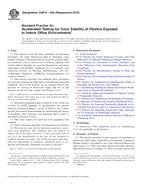
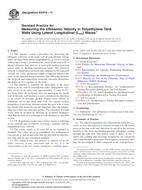 ASTM E2479-11
ASTM E2479-11 ASTM F1164-97(2009)e..
ASTM F1164-97(2009)e..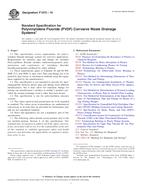 ASTM F1673-10
ASTM F1673-10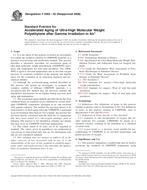 ASTM F2003-02(2008)..
ASTM F2003-02(2008)..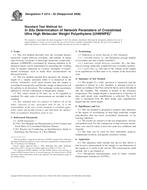 ASTM F2214-02(2008)..
ASTM F2214-02(2008)..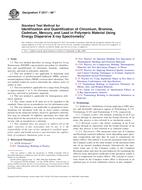 ASTM F2617-08e1
ASTM F2617-08e1
 Cookies
Cookies
